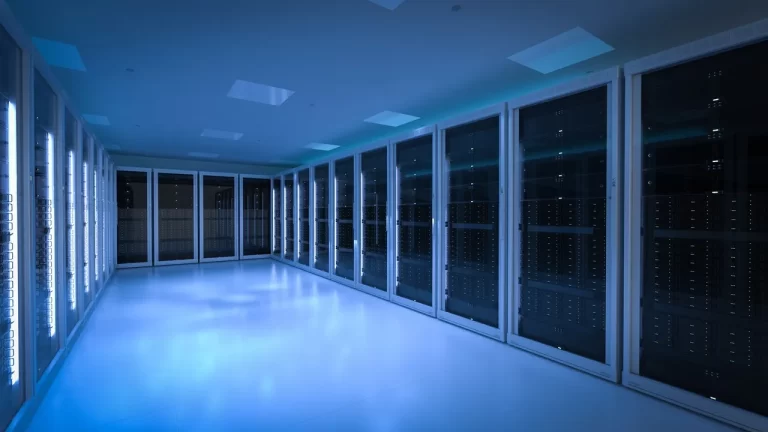Virtual data centers or VDCs are organizationally inherent aspects of disaster recovery and business continuity planning. Citing a cyberattack or a natural disaster, for example, VDCs allow for the immediate and efficient provision of IT resources without needing physical dependencies.
There exists DRaaS that enables organizations to back up the systems and even recover them within the cloud to reduce the extent of the disruptions. VDCs also afford scalability, automation, and cost-effective solutions, making business continuity and disaster recovery affordable to organizations of all sizes.
Namely, VDCs are crucial in the modern digital environment as they offer the necessary flexibility to continue the work smoothly during any crisis.
Understanding Virtualisation in Disaster Recovery
This is a process of making computer-based physical IT assets and services with resources such as servers, storage, and networks to create virtual ones. Since hypervisors and virtual environments enable the management of several virtual machines on one physical host, organizations experience increased flexibility, utilization of available resources, and simplicity in managing the entire procedure. These VMs work in isolation and contain OSs, applications, and data that would come in handy in DR solutions.
The traditional approach of DR meant having duplicate hardware infrastructure in separate physical locations; this approach was costly and inconvenient. Organizations are also capable of operating DR completely through a software program via cloud or remote execution. This change eliminates the need to own multiple duplicative hardware that companies used to set up disaster recovery sites to mirror the main production sites; instead, companies can replicate and reboot systems rapidly at a lower cost, therefore enhancing disaster recovery processes.

Faster Recovery Time Objectives (RTO)
Another feature that has drawn much attention in DR virtualized environments is the decrease in Recovery Time Objectives (RTO). Virtual computers can be easily brought online as they do not have to be physically loaded and set up, as is the case with traditional physical systems. Given that VMs are a sort of copy of the entire system, a bit of copy of the system can be run on suitable hardware or another cloud infrastructure within minutes.
This speed is very important during power failures or disaster situations, when the longer the company and its clients wait, the higher the losses they bear. It is also possible to activate backup VMs to return the full functionality instead of installing the application anew and configuring new servers. It also means that disruption does not last for too long, making it easier for businesses to have better continuity and a more stable organization.
Optimised Resource Utilisation and Cost Efficiency
Consolidation may be defined as running multiple virtual machines on one physical server through virtualization. This implies that businesses can optimize the use of more systems and save more on having spare applications at disaster recovery sites. And thus, by utilizing the existing infrastructures, organizations in a way reduce the costs of acquiring assets and at the same time enhance the system availability.
Also benefits from flexibility since it helps in the provision of dynamic resources. This means that when a disaster occurs, then the virtual environments are capable of redirecting resources to the most important workloads depending on the type of disaster experienced. In addition to optimizing efficiency during emergencies, this approach is economically favorable in terms of long-term operational costs that are always a concern in DR planning and strategy development.

Seamless Replication and Failover Processes
Virtualization makes replication and failover, which are among the most critical aspects of disaster recovery, quite easy. The concept of automation of VM replication procedures enables organizations to keep updated copies of the virtual environments in secondary sites or the cloud. These backups can also be used to perform the failover in case the system fails, and this does not require much input from the users or time.
Both VMware vSphere and Microsoft Hyper-V have built-in DR capabilities such as replication in real-time and taking periodic backups. These make certain that crucial operations are always prepared to assume responsibilities in case of an occurrence in the main environment and increase organizational offense and operational continuity.
Simplified Testing and Strategic Considerations
Another one of the main concerns in traditional DR was the testing of disaster recovery plans, which a lot of the time consumed a huge deal of time or were conducted with a downtime of the systems. Virtualization addresses this by providing the means of non-intrusive testing in test environments. Disaster recovery solutions for businesses can be tested in a safe environment, and production systems do not get affected.
However, it must be understood that virtualization in DR is not devoid of certain inherent challenges, which must be planned to the ‘T.’. Specifically, organizations have to encrypt data and limit access rights, assess their capacity for increased workloads, and adhere to existing legislation. In this case, on-premise and cloud-based virtualization can be the best solution: local control and cloud scalability.
Conclusion: Virtualisation as a Cornerstone of Modern DR
Enterprise virtualization has transformed the disaster recovery model in organizations. Its benefits include quick recovery opportunities, cost-cutting possibilities, and general optimization of the business processes that make DR strategies more efficient. With DR being implemented both on-site and in connection with cloud-based DRaaS services, virtualization guarantees an ability to survive crises and then effectively restore business operations and avoid rapid and significant losses.
This justification goes with the notion that with the advancement of technology in various fields, so do the approaches to guarding it. This way, virtualization helps organizations improve their disaster readiness while at the same time preparing the foundation for a more flexible, more scalable, and more resilient IT environment to be developed shortly.








